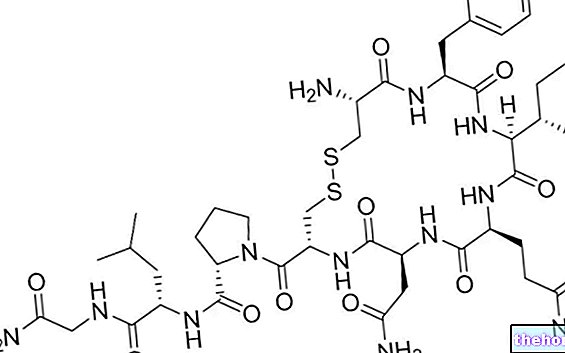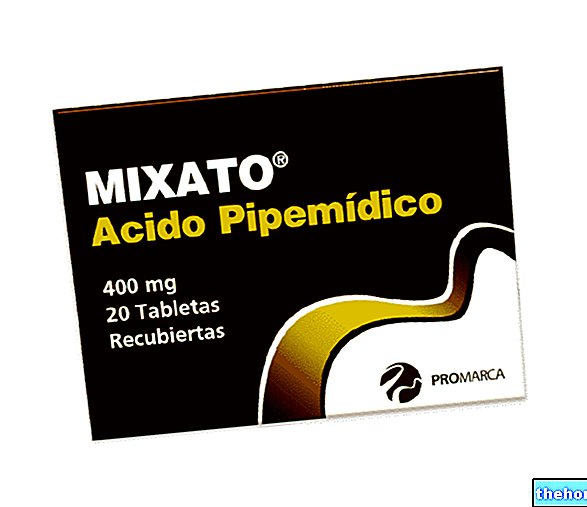NADIXA ® is a drug based on Nadifloxacin
THERAPEUTIC GROUP: Anti-acne preparations for topical use

Indications NADIXA ® Nadifloxacin
NADIXA ® is indicated in the treatment of acne characterized by mild and moderate inflammatory lesions.
Mechanism of action NADIXA ® Nadifloxacin
NADIXA ® is a drug based on Nadifloxacin, an antibiotic belonging to the category of synthetic quinolones, and therefore with bactericidal activity against both aerobic and anaerobic Gram positive and negative bacteria.
The above mechanism of action is carried out through the inhibition of enzymes involved in DNA replication such as Dna gyrase and Dna topoisomerase IV, thus determining a total block of the proliferative processes of the microorganism.
The efficacy in the treatment of acne derives from the ability of Nadifloxacin to limit the proliferation of microbial strains involved in the pathogenesis of this disease such as Proprionibacterium acnes and Staphylococcus epidermis, and often responsible for its inflammatory complications.
Although the drug is used topically, it is possible that there is a partial systemic absorption of the same, due to the compromise of the integrity of the stratum corneum in such conditions, which fortunately does not represent a clinically relevant problem.
Studies carried out and clinical efficacy
NADIFLOXACIN IN THE TREATMENT OF ACNE IN COMBINATION WITH ADAPALENE
J Dermatol. 2013 Jun 3. doi: 10.1111 / 1346-8138.12189. [Epub ahead of print]
Clinical and bacteriological evaluation of adapalene 0.1% gel plus nadifloxacin 1% cream versus adapalene 0.1% gel in patients with acne vulgaris.
Takigawa M, Tokura Y, Shimada S, Furukawa F, Noguchi N, Ito T; The Acne Study Group.
Clinical trial demonstrating how the addition of Nadifloxacin to Adapalene can significantly improve therapeutic results in acne patients with moderate inflammatory lesions.
NADIFLOXACIN, NOT ONLY ANTIBIOTIC ACTIVITY
J Dermatol. 2012 Sep; 39: 774-80. doi: 10.1111 / j.1346-8138.2012.01525.x. Epub 2012 Mar 6.
Novel anti-acne actions of nadifloxacin and clindamycin that inhibit the production of sebum, prostaglandin E and promatrix metalloproteinase-2 in hamster sebocytes.
Sato T, Shirane T, Noguchi N, Sasatsu M, Ito A.
Experimental study that demonstrates how Nadifloxacin, in addition to determining an antibacterial therapeutic action, can also perform a sebostatic and anti-inflammatory action, thus contributing to the improvement of the patient's clinical conditions.
NADIFLOXACIN AND ACNE
Int J Dermatol. 2011 Mar; 50: 350-7. doi: 10.1111 / j.1365-4632.2010.04701.x.
Clinical and histological evaluation of 1% nadifloxacin cream in the treatment of acne vulgaris in Korean patients.
Jung JY, Kwon HH, Yeom KB, Yoon MY, Suh DH.
Clinical trial that demonstrates how Nadifloxacin 1% creams can lead to a prompt remission of symptoms present in Acne patients, even when complicated by inflammatory lesions.
Method of use and dosage
NADIXA ®
Dermatological cream of 10 mg of Nadifloxacin per gram of cream.
Usually the therapeutic protocol with NADIXA ® provides for the application of the correct amount of cream directly on the skin lesions twice a day, morning and evening.
It would be necessary to cleanse the area thoroughly before applying the medicine.
The duration of treatment should not exceed 8 weeks.
Warnings NADIXA ® Nadifloxacin
In order to optimize the therapeutic efficacy of the drug and limit potential side effects, the patient receiving NADIXA ® should
- cleanse the area to be treated before applying the cream;
- avoid contact of the cream with eyes and mucous membranes;
- avoid exposure of the treated region to sunlight;
- avoid the application of skin regions affected by other pathological processes;
- consider the presence of excipients with irritating and allergenic properties.
It is also recommended to store the drug in a cool, dry place out of the reach of children.
PREGNANCY AND BREASTFEEDING
The aforementioned contraindications also extend to pregnancy and the subsequent period of breastfeeding given the absence of studies able to better characterize the safety profile of the drug for fetal health and the ability of absorbed Nadifloxacin to be excreted in breast milk. .
Interactions
The patient receiving NADIXA ® should avoid the topical application of other drugs.
Contraindications NADIXA ® Nadifloxacin
The use of NADIXA ® is contraindicated in patients hypersensitive to the active substance or to one of its excipients and in patients with dermatological diseases.
Undesirable Effects - Side Effects
NADIXA ® therapy may expose the patient to the risk of local and transient adverse reactions such as pruritus. redness and only rarely hives or erythema.
Note
NADIXA ® is a prescription drug.
The information on NADIXA ® Nadifloxacin published on this page may be out of date or incomplete. For a correct use of this information, see the Disclaimer and useful information page.




.jpg)























